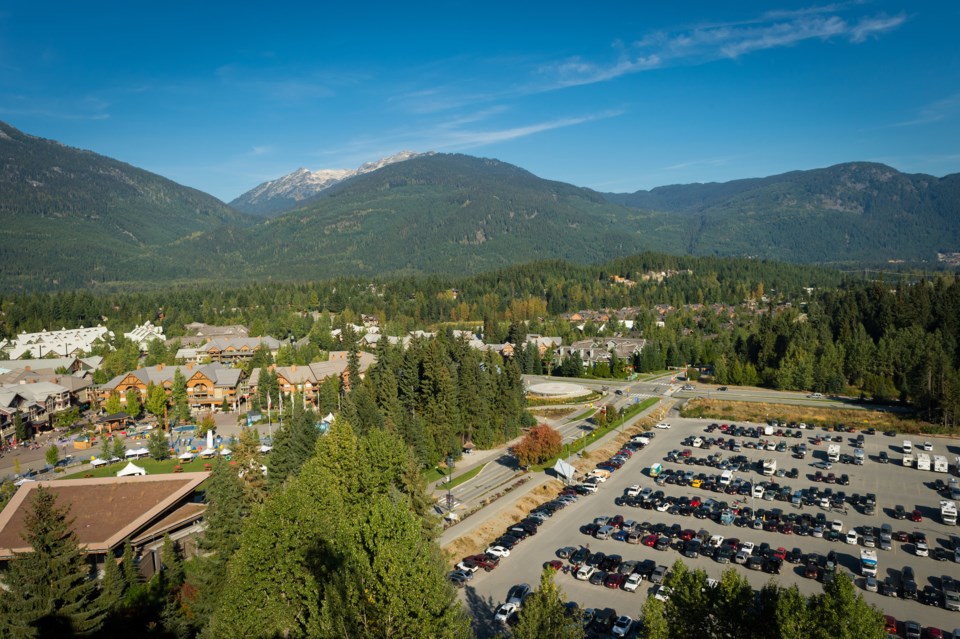As pandemic restrictions eased and tourists poured back into Whistler, the Resort Municipality of Whistler (RMOW) experienced a solid fiscal year in 2022, with revenues exceeding pre-pandemic highs. However, dark clouds lie on the horizon as the U.S. financial system faces ongoing uncertainty.
At the March 21 council meeting, the RMOW’s director of finance, Carlee Price, presented a report on the municipality’s fourth-quarter (Q4) financials showing how Municipal and Regional District Tax (MRDT) and parking revenues soared over the year.
“You’ll recall in the third quarter report that I mentioned a robust level of economic activity supporting, in particular, the revenues collected by the RMOW. This continued in the fourth quarter and most notably in the categories of MRDT and parking,” Price said.
In fiscal 2022, the RMOW brought in $107,415,834 in revenue, a 14-per-cent increase compared to the $94,086,172 in 2021, and 107 per cent of what was budgeted for the year.***
MRDT revenues experienced a notable increase throughout the year, with income 4.4 per cent above 2019 in Q2, rising to 20.5 per cent in Q3 and 39.3 per cent in Q4, compared to 2019. In total, $18,634,292 in MRDT revenue came in in 2022, 55 per cent higher than the previous year.
As visitation rose, parking revenue exceeded RMOW budget expectations by $918,000. In June, the RMOW raised parking rates on day lots 1 to 5, resulting in higher income. $388,000 of this surplus will go toward future community transportation initiatives.
Nearly all municipal revenues grew over the year. Programs fees and admissions rose 31 per cent, followed by permitting and fees (12 per cent), user fees (10 per cent), and property taxes (eight per cent). The revenue sources that saw the most significant year-over-year decline were transit fares, and leases, grants and works and services, which declined by six, 17, and 71 per cent, respectively.
Transit revenues were of course curtailed by the 137-day transit strike that ended last June, as well as the resort’s Return to Transit Loyalty Program, which provided free fares to riders throughout the summer, as well as discounted transit passes to encourage ridership.
“This was a program that incentivized purchases of six- and 12-month passes and pulled forward a lot of revenue into 2023 from 2022, which suggests that recovery in transit fares is going to be delayed into the future as well,” Price said. “It was a choice by this organization to focus on transit ridership and growing ridership rather than transit fares, specifically, and we expect this to continue to be the case going forward.”
The RMOW’s investments also experienced a significant surge in 2022, bringing in $3,266,499, 154 per cent higher than in 2021. At the end of the year, the municipality had $64,922,137 invested with several financial institutions and Municipal Finance Authority bonds.
Price noted significant financial uncertainty in the air due to the collapse of California-based Silicon Valley Bank and assured council that the municipality invests reserve funds conservatively to avoid risk.
“Nobody knows what’s going to happen to the banking system going forward. But it’s worth being extremely cautious, and it’s worth spending some time to think about how such an outcome might affect the RMOW,” Price said.
“On economic risk, it is important to prepare for a potential slowdown to tourist visitation. This would, of course, lag any significant change in the economy, but it’s something to keep in mind.”
Expenditures
Municipal expenditures rose over the year in every department except for the CAO’s office, which decreased spending by 11 per cent due to pandemic-related duties subsiding. Price noted that rising inflation increased budgets as the cost of materials and labour rose.
The Resort Experience department had the largest overall year-over-year increase at 10.2 per cent, due mainly to festivals and RMOW’s summer concert series returning, in addition to additional resources needed to address rising park popularity.
Mayor and council expenditures rose by 9.7 per cent. In June last year, the previous municipal council approved a significant salary increase for the next council, but this took effect at the beginning of 2023. Hence, the change is not in this quarter’s financials. Corporate and Community Services and Infrastructure Services spending increased by 8.9 and two per cent, respectively.
Project spending
The RMOW spent $25,043,876 of the $40.2 million allocated to projects over the year, 62.2 per cent of the planned budget. The budget initially included the Meadow Park Sports Centre envelope repairs, estimated at $1.1 million. However, the grant application for the project failed, resulting in the shelving of the project.
The large projects that saw a significant amount of work completed in 2022 include the Rainbow Park Phase 1 improvement, public safety building upgrades, Alta Vista Valley Trail lighting and various water and sewer system upgrades.
***An earlier version of this article stated revenues were up 107 per cent, when in fact they were at 107 per cent of levels budgeted for the fiscal year. Pique regrets the error.






